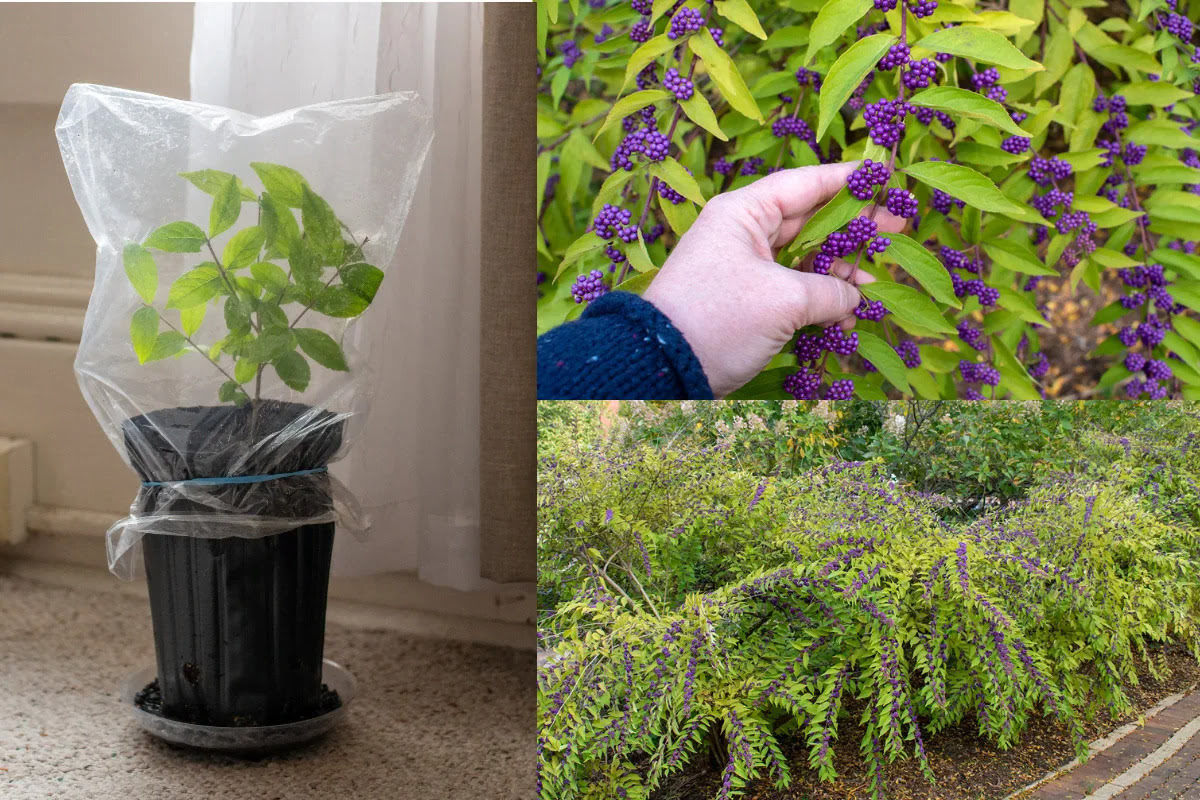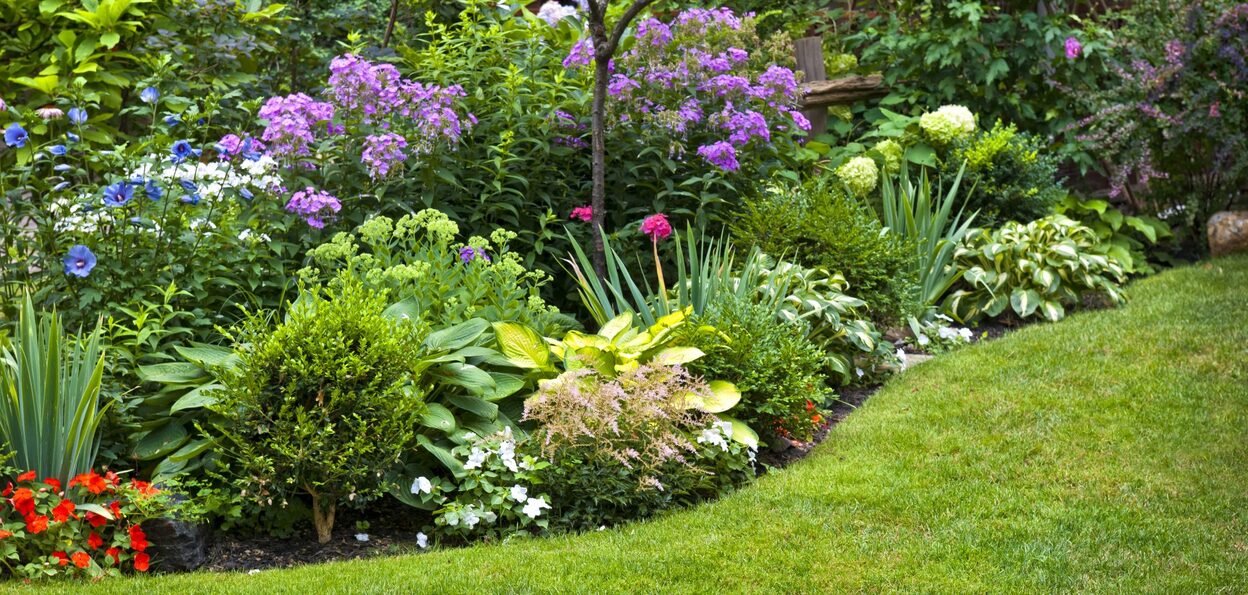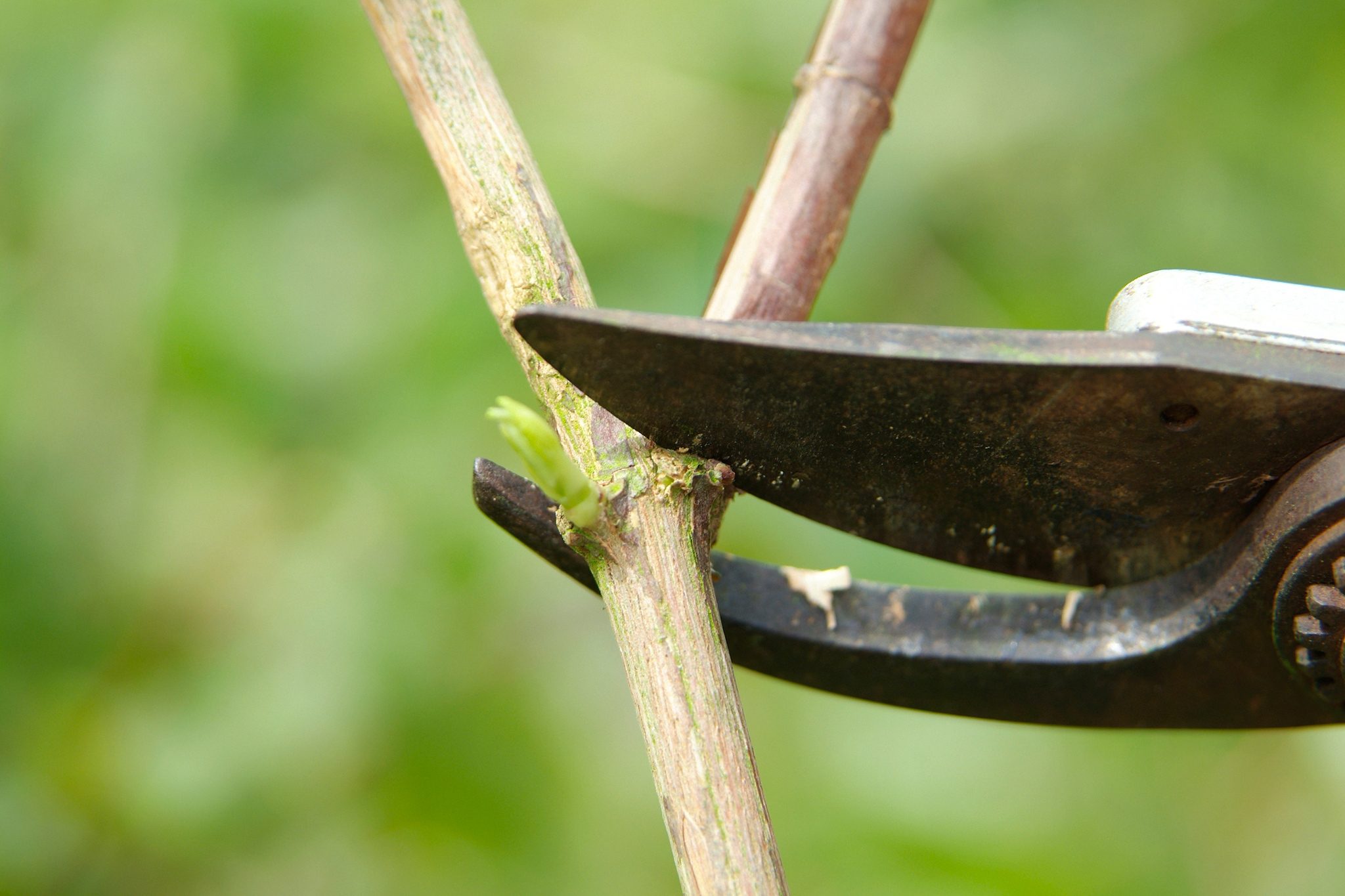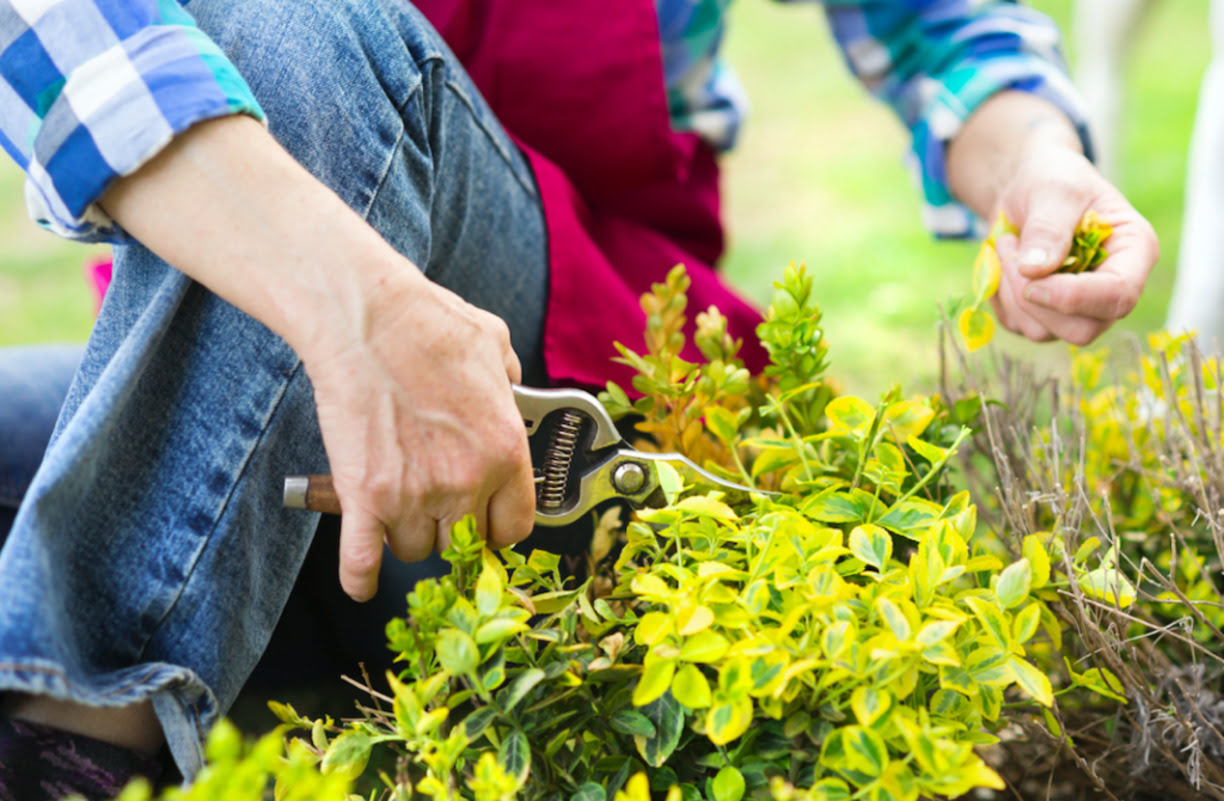Home>Gardening Techniques>Seasonal Gardening>When To Cut Back Crepe Myrtle Shrubs In St Louis
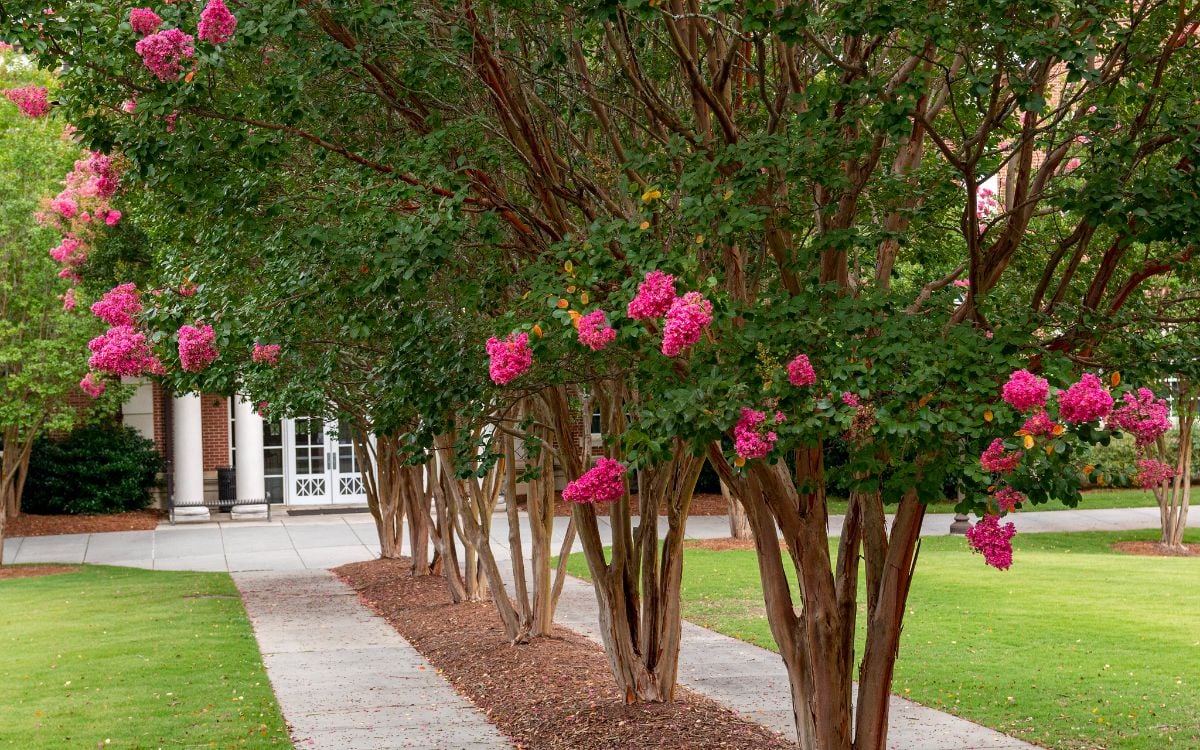

Seasonal Gardening
When To Cut Back Crepe Myrtle Shrubs In St Louis
Modified: January 22, 2024
Discover the best time for cutting back crepe myrtle shrubs in St. Louis with our expert seasonal gardening tips.
(Many of the links in this article redirect to a specific reviewed product. Your purchase of these products through affiliate links helps to generate commission for Chicagolandgardening.com, at no extra cost. Learn more)
Table of Contents
Introduction
Welcome to the world of seasonal gardening in St. Louis, where the vibrant crepe myrtle shrubs reign supreme. These delightful shrubs, known for their stunning blooms and beautiful foliage, are a popular choice for homeowners looking to add color and charm to their outdoor spaces.
In this article, we will explore the art of pruning crepe myrtle shrubs, specifically in the context of St. Louis. We will guide you on when and how to cut back these shrubs to promote healthy growth and maximize their aesthetic appeal.
Understanding the unique characteristics of crepe myrtle shrubs is essential before diving into the world of pruning. These shrubs, also known as Lagerstroemia, are native to Asia and are well-suited to the warm and humid climate of St. Louis. They are characterized by their colorful blooms, which range from hues of pink and red to white and lavender. The leaves of the crepe myrtle shrub offer visual interest throughout the year, with shades of green in the summer and stunning fall foliage in shades of orange and red.
St. Louis experiences a moderate climate, with hot summers and cold winters. These fluctuating temperature ranges have a significant impact on the growth and blooming patterns of crepe myrtle shrubs. To ensure that your crepe myrtle shrubs thrive, it is crucial to understand the timing and technique of pruning.
Proper pruning can help rejuvenate the shrubs, enhance their overall shape, and promote abundant flowering. However, it is essential to prune crepe myrtle shrubs at the appropriate time to avoid interfering with their natural blooming cycle. Pruning at the wrong time may result in the loss of blooms and delay the flowering process.
Throughout this article, we will provide you with valuable insights and step-by-step instructions on when and how to cut back crepe myrtle shrubs in St. Louis. By following these guidelines, you will be able to maintain healthy and visually appealing crepe myrtle shrubs that will excel in their blooming glory.
Understanding Crepe Myrtle Shrubs
Before diving into the intricacies of pruning crepe myrtle shrubs, it is important to have a solid understanding of their characteristics and growth habits. Crepe myrtle shrubs, scientifically known as Lagerstroemia, are deciduous flowering plants that belong to the Lythraceae family. These stunning shrubs are native to Asia and have become a popular choice for landscapes globally, including in St. Louis.
One of the standout features of crepe myrtle shrubs is their vibrant and showy blooms. The flower clusters, known as inflorescences, emerge during the summer months and can vary in color from shades of pink, red, white, and even lavender. These blooms not only add a pop of color to the landscape but also attract pollinators like bees and butterflies.
Aside from their stunning flowers, crepe myrtle shrubs also possess attractive foliage throughout the growing season. The leaves are typically green and have a unique crinkled or crepe-like texture, which is where their common name originates. During the fall, crepe myrtle shrubs put on another stunning display as their leaves turn a brilliant shade of orange or red, providing a colorful backdrop to the landscape.
In terms of size, crepe myrtle shrubs can vary widely depending on the cultivar and growing conditions. They can range from compact varieties that reach a height of 3 to 5 feet to large specimens that can grow up to 25 feet tall. The growth habit can also vary from upright and columnar to more spreading and rounded.
Crepe myrtle shrubs are known for their adaptability and can thrive in a variety of soil types, including well-drained clay, loam, and sandy soils. They perform best in full sun, which encourages optimal blooming and overall plant vigor. However, they can tolerate some shade, although this may result in reduced flowering.
Now that you have a solid foundation of knowledge about crepe myrtle shrubs, you are better equipped to understand their needs and how to prune them effectively. In the following sections, we will explore the climate considerations in St. Louis and the optimal timing for pruning these delightful shrubs.
Climate Considerations in St. Louis
St. Louis has a moderate climate with hot summers and cold winters, which can have a significant impact on the growth and care of crepe myrtle shrubs. Understanding the specific climate considerations in this region is crucial for successfully maintaining these beautiful shrubs.
During the summer months, St. Louis experiences high temperatures and high humidity. Crepe myrtle shrubs thrive in these conditions, as they are native to regions with similar climates in Asia. The warm weather promotes healthy growth and encourages the abundant flowering that crepe myrtles are known for.
However, it is important to note that excessive heat can also pose challenges for crepe myrtle shrubs. Prolonged heatwaves, combined with insufficient watering, can cause stress and result in reduced blooming and even leaf scorch. Therefore, it is important to provide adequate moisture during the hottest months of the year, especially for newly planted shrubs.
On the other hand, St. Louis winters can be harsh, with freezing temperatures and occasional snowfall. Crepe myrtle shrubs are generally hardy and can withstand cold temperatures, but some cultivars are more susceptible to winter damage than others. It is advisable to choose varieties that are known to be cold-hardy for the St. Louis region.
During the winter months, it is important to protect your crepe myrtle shrubs from extreme cold and harsh winds. You can apply a layer of mulch around the base of the shrub to insulate the roots and help retain moisture. Additionally, you may consider wrapping the shrub with burlap or using a protective cover to shield it from frost and wind damage.
Understanding the seasonal fluctuations in temperature and humidity in St. Louis is crucial when it comes to pruning crepe myrtle shrubs. Timing is key to ensuring that pruning is done at the optimal time to prevent damage and promote healthy growth. In the next section, we will discuss the ideal timing for pruning crepe myrtle shrubs in St. Louis.
Timing for Pruning Crepe Myrtle Shrubs
Pruning crepe myrtle shrubs at the right time is crucial to ensure their health and promote optimal blooming. In St. Louis, it is recommended to prune crepe myrtles in late winter or early spring, before new growth begins.
Pruning during this time allows the shrubs to focus their energy on producing new growth and developing blooms for the upcoming summer season. It also helps to remove any dead or damaged branches, improving the overall structure and appearance of the shrub.
One popular method of pruning crepe myrtle shrubs is known as “crape murder,” where the shrub is severely cut back to stubs in the mistaken belief that it will result in more blooms. However, this practice is not recommended, as it can weaken the plant and lead to a less attractive growth habit.
Instead, a more natural and aesthetically pleasing approach is to selectively prune your crepe myrtle shrubs. Start by removing any crossing or rubbing branches and any dead or diseased wood. Then, thin out the center of the shrub to improve airflow and sunlight penetration, which can help reduce the risk of fungal diseases.
When pruning, make sure to use sharp, clean pruning shears or loppers to make clean cuts. Avoid leaving stubs or ragged edges, as this can invite pests and diseases into the shrub. Instead, make cuts just above a bud or lateral branch that is facing outward to encourage proper growth and an attractive shape.
It’s important to note that crepe myrtle shrubs can also benefit from a light summer pruning after the initial spring pruning. This can involve removing any damaged or spent blooms, as well as lightly shaping the shrub. However, avoid heavy pruning during the summer, as this can lead to the loss of potential blooms.
By pruning crepe myrtle shrubs at the appropriate time and employing proper pruning techniques, you can create a well-structured, healthy shrub that will provide you with stunning blooms and foliage throughout the season. In the next section, we will explore some signs that indicate pruning may be needed for your crepe myrtle shrubs.
Signs that Indicate Pruning is Needed
While pruning crepe myrtle shrubs on a regular basis is necessary for their health and aesthetic appeal, there are also specific signs that indicate it may be time to pick up the pruning shears. Recognizing these signs can help you address any issues and maintain the overall health of your crepe myrtle shrubs.
One of the common signs that pruning is needed is the presence of dead or diseased branches. These branches may have a different color or lack leaves, indicating that they are no longer viable. Removing these branches will improve the overall appearance of the shrub and prevent the spread of diseases to healthy parts of the plant.
Another sign to look out for is the presence of crossing or rubbing branches. When branches grow too close together, they can rub against each other, causing damage and creating entry points for pests and diseases. To prevent this, selectively prune these overlapping branches to maintain proper spacing and airflow within the shrub.
If you notice that your crepe myrtle shrub has become overcrowded or has developed a dense canopy, pruning can help open up the plant and allow sunlight to reach the inner branches. This will promote better air circulation, reduce the risk of fungal diseases, and encourage healthy growth.
When observing your crepe myrtle shrub, consider its overall shape and size. If the shrub has become too tall or wide for its space, or if it is encroaching on nearby structures or plants, it may be time for a pruning session. Trimming back the branches strategically will help maintain a more compact and manageable size.
Additionally, if you notice an abundance of spent or faded blooms, it may be beneficial to perform a light pruning to remove these flowers. This not only enhances the appearance of the shrub but also encourages a fresh set of blooms to develop.
Remember, it is important to keep in mind the appropriate timing and techniques for pruning based on your location and climate. By regularly checking for these signs and addressing them through proper pruning, you can ensure that your crepe myrtle shrubs remain healthy, vibrant, and visually stunning.
Step-by-Step Guide to Cutting Back Crepe Myrtles in St. Louis
Now that you understand the importance of pruning and the signs that indicate it’s time to cut back your crepe myrtle shrubs, let’s dive into a step-by-step guide to help you effectively and safely prune your shrubs in St. Louis.
- Gather necessary tools: Before you begin, make sure you have the appropriate tools on hand. These may include sharp pruning shears, loppers for thicker branches, and a pruning saw for larger cuts.
- Wait for late winter or early spring: The ideal time to cut back crepe myrtles is in late winter or early spring, before new growth begins. This ensures that you don’t interfere with the blooming cycle and allows the shrub to focus its energy on producing new growth.
- Remove dead or diseased branches: Start by identifying and removing any dead or diseased branches. Make clean cuts just above the branch collar or the nearest healthy bud or lateral branch.
- Thin out the center: To promote airflow and reduce the risk of fungal diseases, selectively remove some of the inner branches. This will help open up the shrub and allow light to reach all parts of the plant.
- Prune crossing or rubbing branches: Identify any branches that are crossing or rubbing against each other and selectively remove them. This will prevent damage and potential entry points for pests and diseases.
- Shape the shrub: Assess the overall shape of the shrub and make any necessary cuts to maintain a desirable shape. Keep in mind the natural growth habit of the shrub and avoid excessive pruning that may impact its overall health.
- Avoid “crape murder”: It is important to avoid the practice of severe pruning, known as “crape murder,” where the shrub is cut back to stubs. This can weaken the shrub and result in an unattractive growth habit.
- Dispose of pruning debris: Once you have finished pruning, dispose of the cut branches and debris appropriately. This can include composting or disposing of them in accordance with local regulations.
- Monitor and maintain: After pruning, continue to monitor the health of your crepe myrtle shrub throughout the growing season. Perform light summer pruning if necessary to remove spent blooms and maintain the shape of the shrub.
With this step-by-step guide, you are well-equipped to confidently prune your crepe myrtle shrubs in St. Louis. Remember to always practice safe pruning techniques and follow the recommended timing to ensure the health and beauty of your shrubs.
Additional Tips for Maintaining Crepe Myrtle Shrubs
Pruning is just one aspect of maintaining healthy and vibrant crepe myrtle shrubs in St. Louis. Here are some additional tips to help you care for your shrubs and ensure their long-term success:
- Watering: Crepe myrtle shrubs benefit from regular watering, especially during dry spells. Deeply water the shrub at the base, avoiding overhead irrigation, which can promote fungal diseases.
- Fertilizing: Apply a balanced and slow-release fertilizer in early spring, following the instructions on the product label. This will provide the necessary nutrients for healthy growth and blooming.
- Mulching: Apply a layer of organic mulch around the base of the shrub to help retain moisture, regulate soil temperature, and suppress weed growth. Keep the mulch a few inches away from the trunk to prevent rot.
- Protecting from harsh weather: During extreme weather conditions, such as heatwaves or severe storms, consider providing temporary shade or protection for your crepe myrtle shrubs. This can include using shade cloth or temporary structures.
- Monitoring for pests and diseases: Regularly inspect your crepe myrtle shrubs for any signs of pest infestations or diseases. Common problems include aphids, powdery mildew, and scale insects. Treat any issues promptly with appropriate methods or consult a professional if necessary.
- Practicing proper pruning techniques: When pruning, always use sharp and clean tools to make clean cuts. Avoid leaving stubs or ragged edges, as they can invite pests and diseases. Additionally, avoid excessive pruning or severe “crape murder” practices, maintaining the natural shape of the shrub.
- Winter protection: During cold winters, protect your crepe myrtle shrubs from frost and wind damage. Apply a layer of mulch around the base, and consider wrapping the shrubs with burlap or using protective covers.
- Regular maintenance: Throughout the year, keep up with regular maintenance tasks such as removing spent blooms, light shaping, and pruning any dead or damaged branches. This will promote the overall health and appearance of your crepe myrtle shrubs.
By following these additional tips and incorporating them into your care routine, you can keep your crepe myrtle shrubs in optimal condition throughout the seasons. Remember to observe your shrubs closely and respond promptly to any signs of distress or issues that may arise. With proper care and maintenance, your crepe myrtle shrubs will continue to bring beauty and joy to your St. Louis landscape.
Conclusion
Caring for crepe myrtle shrubs in St. Louis requires a delicate balance of understanding their unique characteristics and implementing proper pruning techniques. By following the guidelines outlined in this article, you can maintain healthy and visually appealing crepe myrtle shrubs that thrive in the St. Louis climate.
We began by building a foundation of knowledge about crepe myrtle shrubs, exploring their stunning blooms, attractive foliage, and adaptability to various soil types. Understanding the climate considerations in St. Louis, with its hot summers and cold winters, helped us identify the optimal timing for pruning.
We learned to recognize the signs that indicate pruning is needed, such as dead or diseased branches, crossing or rubbing branches, and an overcrowded or misshapen shrub. Armed with this knowledge, we then embarked on a step-by-step guide to cutting back crepe myrtle shrubs, emphasizing the importance of selective pruning and avoiding the “crape murder” practice.
Additionally, we provided extra tips for maintaining crepe myrtle shrubs, including proper watering, fertilizing, mulching, and protection from harsh weather. We emphasized the significance of monitoring for pests and diseases and practicing regular maintenance throughout the year.
By implementing these techniques and incorporating them into your gardening routine, you can enjoy the beauty and splendor of crepe myrtle shrubs in your St. Louis landscape. Remember, gardening is a journey filled with learning and exploration. Continuously observe your plants, respond to their needs, and adapt your care accordingly.
With dedication and knowledge, you have the power to create a breathtaking outdoor space adorned with flourishing crepe myrtle shrubs. So grab your pruning shears, embrace the art of seasonal gardening, and witness the transformation of your crepe myrtle shrubs in St. Louis.

